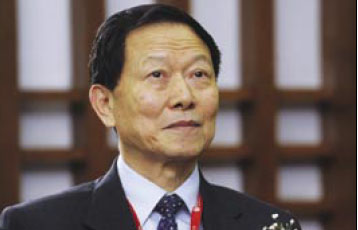Business
Are SOEs the economy's friends or foes?
(China Daily)
Updated: 2010-09-02 17:50
 |
Large Medium Small |
|
 Li Rongrong stepped down as head of the State-owned Assets Supervision and Administration Commission on Aug 24. Wang Zhou / For China Daily |
BEIJING - The operational efficiency of China's huge State-owned assets has reportedly improved by leaps and bounds over the past seven years.
At the end of 2009, the total value of China's State-owned assets had increased to 21 trillion yuan ($3.1 trillion), rising from 7 trillion yuan seven years ago.
As in 2010, as much as 30 of China's State-owned enterprises (SOEs) were included within Fortune's list of the top 500 companies in the world, compared with a total of six in 2003.
The achievement, to some degree, can be attributed to one person - Li Rongrong, former minister of the State-owned Assets Supervision and Administration Commission (SASAC), who stepped down as its leader on Aug 24. Wang Yong, former head of the General Administration of Quality Supervision, Inspection and Quarantine, is the successor.
| ||||
During the past seven years, SOEs are seeing an average annual profit growth of 19 percent. Eighty-six of the SOEs, as well as 152 SOE-controlled companies, are listed on the A-share market, accounting for 35 percent of the total market value of markets in Shanghai and Shenzhen.
For example, PetroChina, with a net profit of 114.4 billion yuan in 2008, became the most profitable company in Asia. And China Mobile became the most profitable communications company in the world with a net profit of 112.8 billion yuan in 2008.
Part of Li's concept in managing State-owned assets comes from the Singapore-based Temasek Holdings, where he paid a visit one year after he became the minister of SASAC in 2003, according to a report by China Business Journal.
The nature and mission of Temasek Holdings and SASAC is somewhat alike. Temasek Holdings, founded in 1974, is a State-owned company that takes control of assets in many major sectors. The total assets of the company is 8 percent of Singapore's GDP.
Li looked to Temasek Holdings as a role model. SASAC, in Li's eyes, is an asset manager rather than a government supervisory body.
Under this concept, some successful practices of the Temasek Holdings were introduced to China, including an independent board system to help improve corporate governance. This system is now practiced by 34 selected SOEs.
Another significant measure Li introduced is to regulate the salaries of SOE's top managers. In 2004, the commission issued a guideline to build an evaluating system to monitor the performance of SOE's top managers. Each SOE leader will be graded according to the performance of the company the leader is in charge of. How much the leader is paid is determined by the leader's score. This regulation largely stimulated the effectiveness and efficiency of SOE leaders.
Meanwhile, in 2004, the body also started an annual recruitment campaign to attract global talents to help manage SOEs.
One day before Li's retirement, SASAC announced a major reshuffle in senior positions at power generator Guodian Corp; Shenhua, a mining company; Cofco Group, the country's largest food trader; and at SinoChem, the leading chemical company in China. SASAC said this move was aimed at pushing SOEs to develop independent boards and improve corporate governance.
In 2004, SASAC announced the goal of reducing the number of SOEs to between 80 and 100 by the end of 2010 through major consolidations - encouraging larger firms acquiring smaller and unprofitable ones. The target has almost been met as the number of SOEs has shrunk from 196 to 123.
This, however, has raised another controversy across the nation. Questions abound over whether SOEs have grown too large and whether the large SOEs are threatening the development of private enterprises. This was a big concern, especially during the financial crisis, when many of the private companies found it hard to survive.
The real estate sector is one example. Since 2009, SOEs succeeded in almost every land auction they have participated, breaking record land prices across the country.
Most recently, 16 SOEs have formed an association, focusing on the research and development in new energy vehicles. Since the association was formed by almost all of the major players in the country's largest sectors - including China's top three oil companies, two of the nation's top power grid operators and two major automakers - people were worried that this association would hinder the development of private enterprises in the respective sectors.
"It is too early to say that the growth of SOEs has hindered the development of private companies," Li said in a recent news conference in Beijing to mark the establishment of the new energy vehicles association. "People should know that the total State-owned assets were only 21.3 billion yuan in 1998. But now, our monthly profit can sometimes break 100 billion yuan."
While it is true that Li has enough reason to take pride in his achievements over the past seven years, it is also true that Wang Yong, his successor, will face a number of challenges to push more SOE reforms forward, when most of the SOEs grow under a much more global microscope.
China Daily
